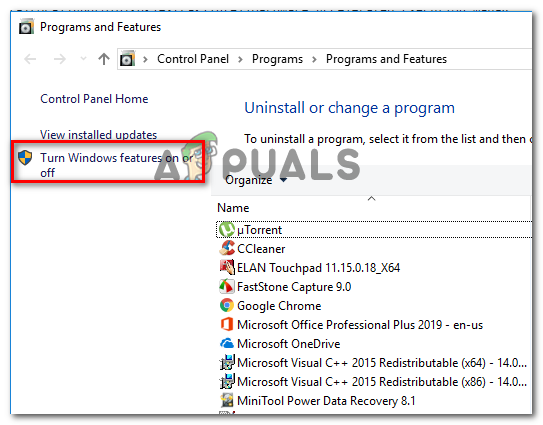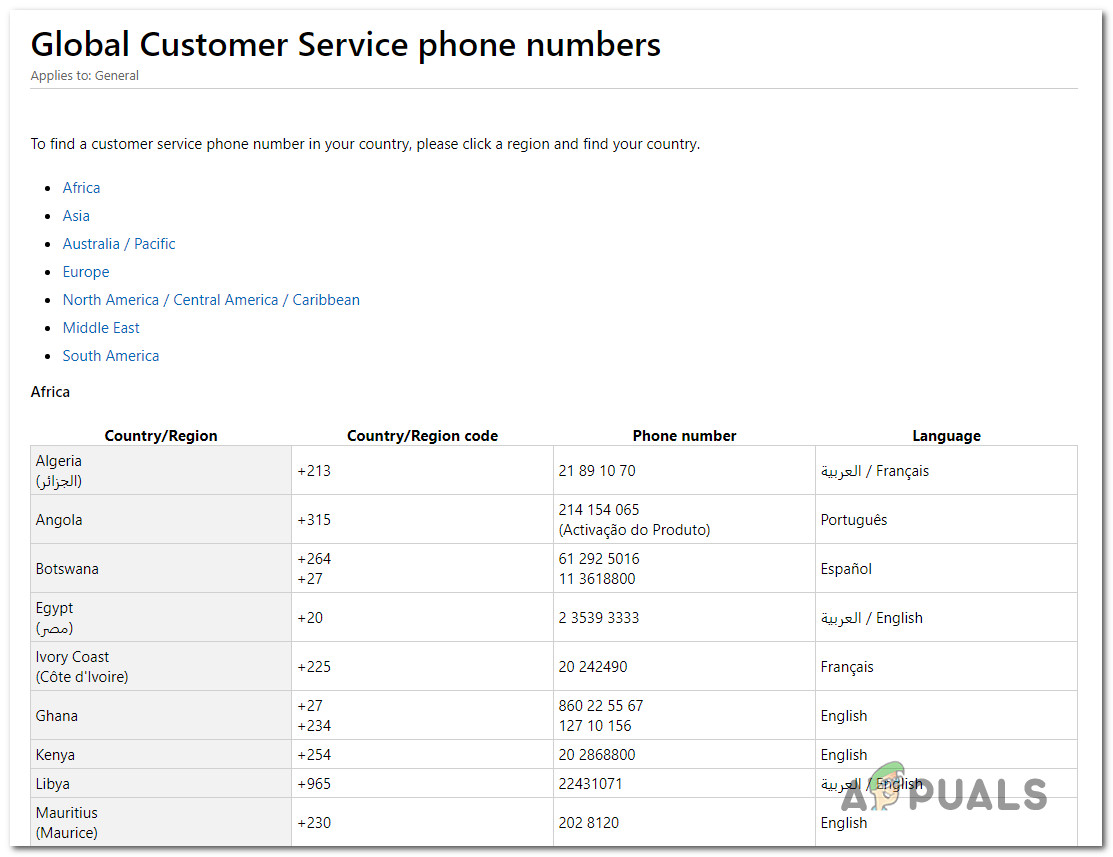After investigating this particular issue thoroughly, it turns out that there are several different underlying causes that might trigger this error. Here’s a shortlist of potential culprits that might be responsible for this issue: Now that you are aware of every potential situation that might spawn this error, here’s a list of methods that other affected users have successfully used to get to the bottom of this issue:
1. Update Browser or Use Internet Explorer
If you’re only seeing this error while attempting to access the Windows Update Catalog from a 3rd party browser like Google Chrome or Mozilla Firefox, you should start by forcing your browser to update itself to the latest version. Most likely, you’re seeing the 8DDD0020 error due to a security exploit that was not yet patched by your browser so Microsoft rejects the connection. If you already ensured that your third-party browser is updated and you’re still seeing the same error, the only option at this point is to use switch over to Internet Explorer and attempt to use the Windows Update Catalog from there. Internet Explorer comes pre-installed by default regardless of your Windows version, so there’s nothing to install on your part. To open Internet Explorer, press Windows key + R to open up a Run box. Inside, type ‘iexplorer’ inside the text box and press Enter to open up an IE window automatically. Once you’re inside the Internet Explorer window, use the Microsoft Update Catalog normally and check if you’re still seeing the 8ddd0020 error when you attempt to install an update from the catalog. If you’re still encountering the same issue even when using Internet Explorer, move down to the next potential fix below.
2. Reset the Internet Options cache on IE
If you’re seeing the 8DDD0020 error while using Internet Explorer (IE 8 or older), chances are the issue is related to an ActiveX glitch that prevents your computer from establishing a secure connection with the Windows Update Catalog. In this case, the fix is simple – You’ll need to do a full reset of your built-in browser by accessing the Advanced tab of Internet Options and resetting the cache containing the ActiveX temporary files. Several affected users have confirmed that this fix finally allowed them to finally use the Windows Update Catalog normally. Follow the instructions below to reset the Internet Options cache from the Advanced tab:
3. Revert back from IE11 (Windows 10 Only)
If you’re encountering this issue on Windows 10, chances are the problem is occurring due to a glitch affecting Internet Explorer 11. Several users facing the same issue have confirmed that they’ve been able to solve the issue by disabling IE 11, forcing the OS to revert back to the previous version of Internet Explorer We’ve identified several user reports where affected users have managed to fix this problem by using the Windows Features screen to prevent your Windows installation from using IE 11. Note: This change doesn’t need to be permanent. You can only disable IE11 temporarily and do your thing with Windows Update Catalog before reverting back to the latest Internet Explorer version. Follow the instructions below to temporarily disable Internet Explorer 11 from the Windows features screen in order to be able to access the Windows Update catalog via your IE / Edge browser: If this method was not successful in your case, move down to the next potential fix below.
4. Perform a repair install / clean install
If none of the methods above have worked for you, it’s very likely that you’re dealing with some type of underlying system file corruption that is your machine from establishing a connection with the Windows Update Catalog. In this case, the only thing you can do at this point (other than asking for specialized assistance) is to reset every relevant OS component that’s related to your current Windows installation. And when it comes to doing this, there are 2 different methods that will allow you to do this:
Repair install – This is hands-down the best way of resetting every relevant Windows component because it allows you to do this without touching any of your personal files present on the OS drive. But keep in mind that the main drawback is that this procedure is quite tedious and you’ll be required to use compatible installation media to perform this operation.Clean install – This is the easiest procedure because it can be initiated directly from the GUI menu of your Windows 10 installation. But keep in mind that unless you manage to back up your data in advance, expect to lose every personal data on the OS drive (applications, games, personal media, documents, etc.)
If a clean install or repair install is off the table, move down to the next potential fix below to see how you can get in contact with a Microsoft LIVE agent.
5. Contact Microsoft’s support
If none of the methods above have worked in your case, one last troubleshooting avenue that you should explore is to get in contact with a Microsoft support agent and ask them to fix the issue for you. Since the problem affects Windows Update, you will be assigned to a WU expert that will take remote control of your machine and perform a series of troubleshooting steps aimed at identifying and resolving the 8ddd0020 error with Windows Update. There are multiple ways of getting in contact with a Microsoft agent, but the fastest and easiest way to receive assistance is to call the free tool number that’s specific to your country of residence. Here’s the official list of Microsoft toll-free support numbers. Note: Keep in mind that depending on the region and the number of support agents that are available, it might take some time until you are allocated to a support agent. Chances are you’ll be asked a number of security questions that will confirm whether you’re the owner of the license.
LOTRO Game error [201] Can’t open the data files ‘Resolved’Discord Fatal JavaScript Error (Resolved)How to Get Your Citizen One Loan Number When Received a Wrong Number on the…How to Update Phone Number on Your Gmail Account?








